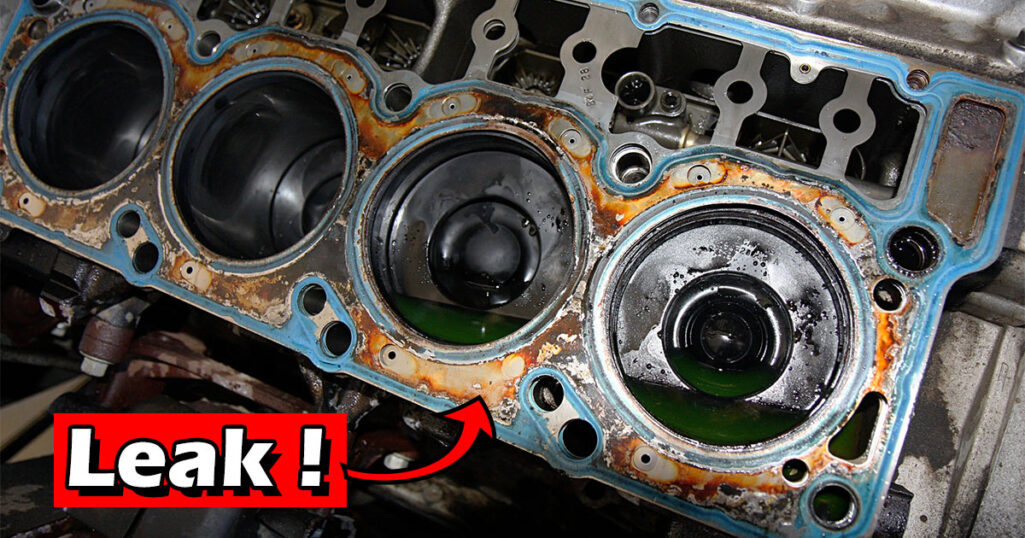
Even though cylinder head gasket leaks aren’t very common, most vehicle owners give it a lot of attention.
Keeping the combustion chamber leak-free is impossible without a good head gasket. As a sealant in the engine, it prevents the mixing of engine oil and coolant, ensuring a proper combustion cycle.
Head gaskets can leak, which can be disastrous. Use sealer materials to patch cylinder head gasket leaks before they turn into a costly engine repair.
Head cylinder gasket leak is a common problem, and we’ll go into detail about the origins, symptoms, and safety concerns here.

When A Head Gasket Is Leaking, Is It Safe To Drive?
A little leak on a cylinder head might quickly develop into a major one. Fix the leak as soon as you see it to avoid a more costly repair. A head gasket leak may be safe for short periods of time, but you don’t know what will happen in the long term.

In the event of a leak, the coolant might spill out into the ground or into the combustion chambers. Therefore, it is best to address the leak as soon as possible. If you continue to drive with even a little leak, you put your engine at risk of a catastrophic gasket failure.
When you’ve got a serious leak, you’re looking at a pricey and maybe complex repair that might result in catastrophic engine damage if the technician can’t get it solved at the right time.
Symptoms of a Leaking Head Gasket
Knowing the symptoms of a leaking or damaged head gasket is critical to fixing it and avoiding major engine component damage.
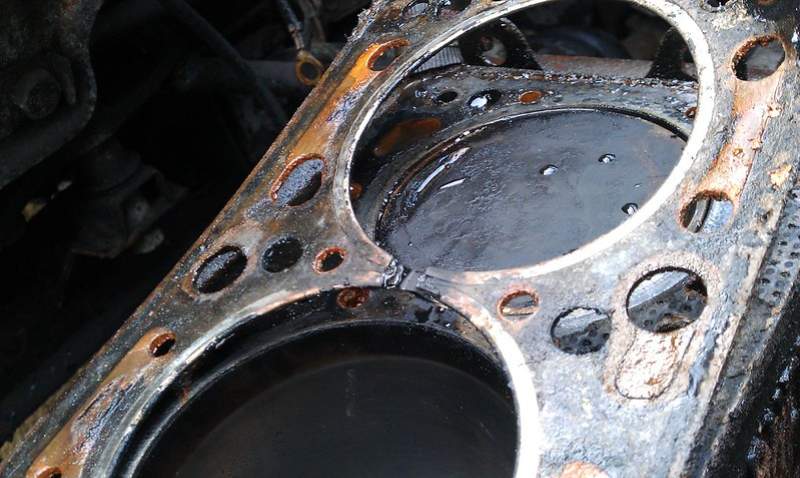
External leak of cooling fluid: A coolant leak between the engine head and the engine block is a common indicator of a leaky head gasket. This occurs while the engine is running at a normal operating temperature.
If no coolant lines are surrounding this location, it will be easy to spot. There may be coolant pipes nearby; therefore, you need to discover where the coolant leak is coming from before making a decision.
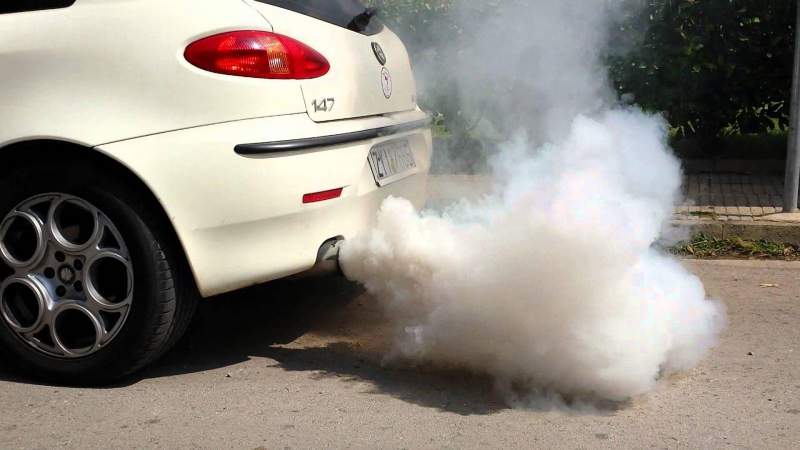
White smoke emitted from the exhaust tailpipe: The leak might also penetrate the engine compartment if there is an exterior leak. Internal gasket leakage can enable coolant to flow into the combustion chamber, causing the engine to overheat.
During the combustion process, the coolant will evaporate/burn and release white smoke from the exhaust tailpipe.
Keep in mind that white smoke from the exhaust pipe is typical and consists of moisture. So, how can you tell one from the other?
The white smoke from an internal coolant leak will be followed by a smell when the vehicle is cold-started in the morning. Even when the engine heats up, the odor may persist.
A large cloud of white smoke rising from the engine reveals a severe coolant leak.
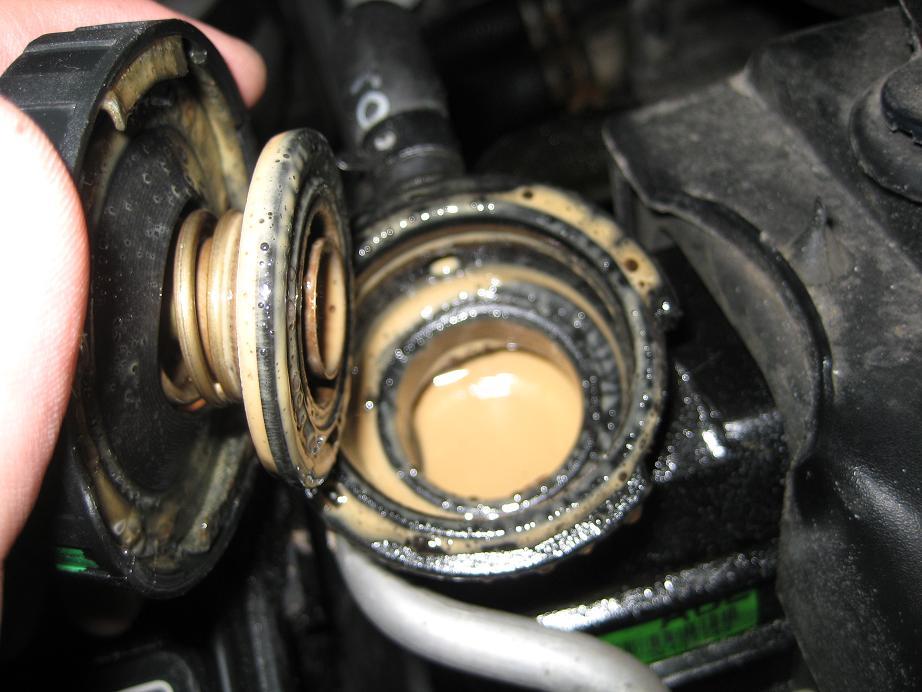
Oil that seems to be milky or white: If the antifreeze leaks into the combustion chamber through an internal gasket leak, the antifreeze will flow into the crankcase and affect the oil color. The milky fluid might be seen on the dipstick or engine cap.
As a result, the lubrication of internal engine components cannot be properly maintained due to the presence of coolant in the engine oil.
Inner engine elements like cam and crankshaft bearings on the cylinder walls will wear out more quickly due to the increased friction. Rust may develop on machined surfaces even if you keep your car in the garage, even if you don’t drive it for a long time.
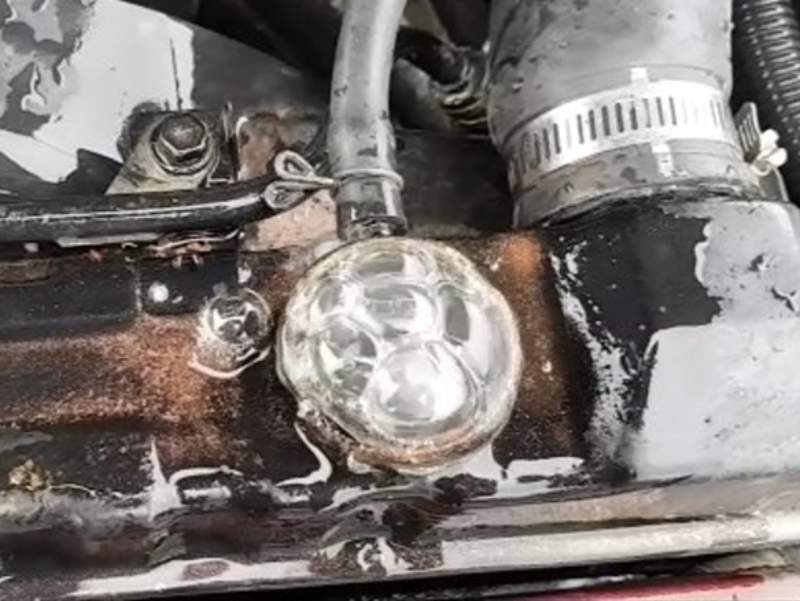
The radiator has bubbles: The exhaust gases can also get into the coolant through internal gasket leakage, in addition to coolant leaking.
The antifreeze will seem boiling even though the engine is below normal operating temperature because of bubbles in the coolant reservoir or radiator. The bubbles in the coolant are a clear representation of the exhaust gases.
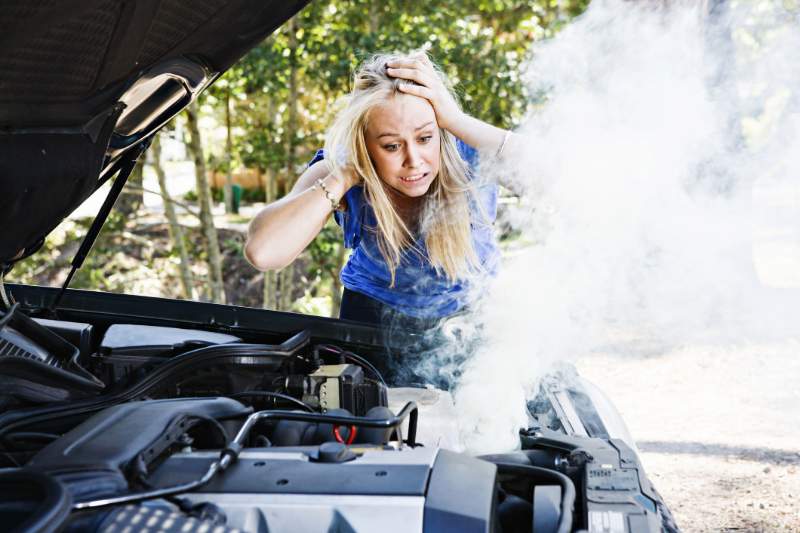
Engine Overheating: Overheating is the most prevalent indicator and cause of a head gasket leak. If you don’t fix a head gasket leak as soon as you notice it, your engine will overheat.
On the other hand, small leaks will keep the engine running normally until the coolant level drops below the required level.
Internal engine parts might expand beyond their intended size due to a significant overheat, resulting in warping or cracking of the component. It can potentially cause the engine to fail completely, requiring a complete rebuild.
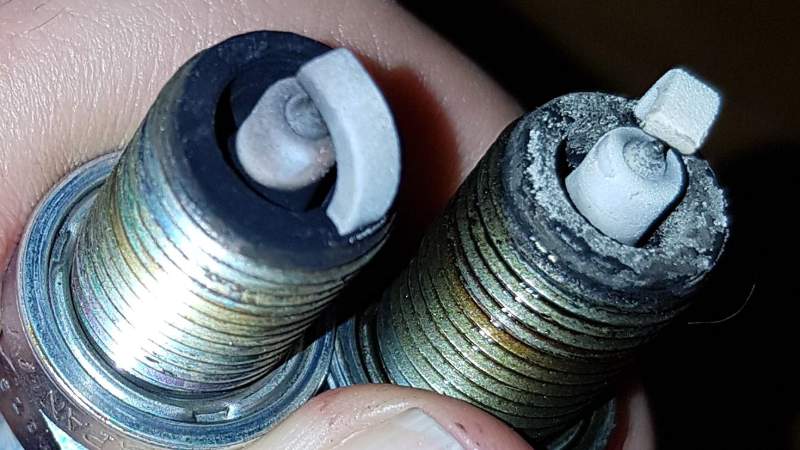
Unclean spark plugs: Coolant will flow into the combustion chamber and burn on the spark plug electrode during the combustion cycle, leaving white residues. These white residues might also be caused by other system issues.
Consequently, if you do happen to see it, please avoid drawing any quick conclusions.
What’s Causing the Head Gasket to Leak?

You may wonder, “what causes the head gasket to leak?” if you’ve had a leaky head gasket. There might be several contributing elements. Take a look at them below:
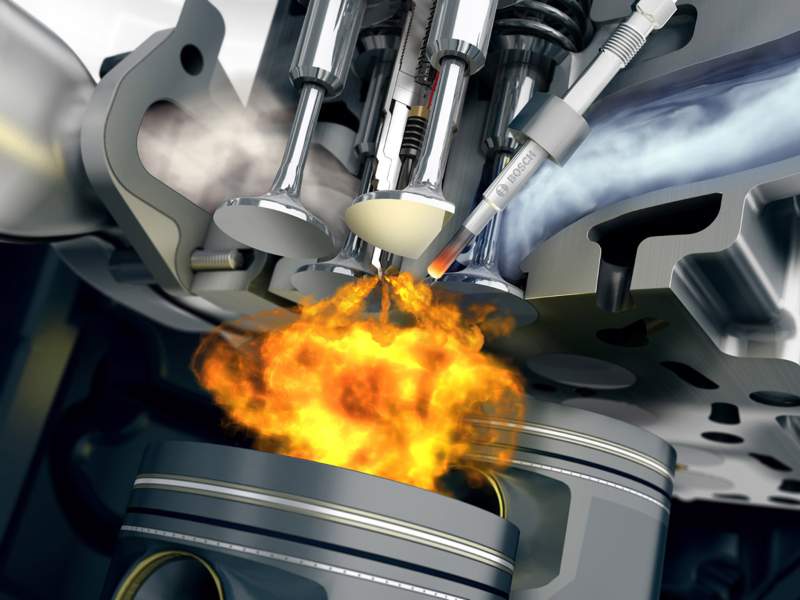
Mechanical power: At the end of each combustion cycle, an energy burst will occur. As long as the engine is running, the cylinder gasket will be stressed and eventually leak or break.
Heat: It is well-known that internal combustion engines produce a lot of heat when they’re running. As a result, a coolant is added to keep it at a reasonable working temperature.
It’s possible for the engine to become overheated even if coolant is present in the water pipes.
The head cylinder gasket wears out and leaks due to the tension and heat expansion rate of the engine block and the gasket.
Vibrations: To be clear, this is an uncommon thing. The head gasket is subjected to regular stress because of the vibration drivers experience when traveling.
You might be wondering, where exactly is the head gasket? It is located between the cylinder head and the engine block. Vibrations can damage, stretch, and even deform head cylinder bolts over time.
These allow for more rapid wear and tear. Vibrations over a long period of operation can potentially contribute to engine failure if the design is poor.

Overheating: When the engine overheats, several things may go wrong with it, such as a malfunctioning thermostat or radiator. The low coolant level is also a prevalent reason. Due to a lack of coolant, an engine’s head gasket will expand due to excessive heat buildup, and this will cause leakage.
How To Repair Leaks In A Head Gasket?
Repairing a leaking head gasket is a difficult task requiring extensive technical knowledge. We are unable to provide step-by-step directions for a comprehensive fix in this article due to the difficulty of the project. The following are some solutions for dealing with a head gasket leak.
Products to Stop Leaks in Gaskets
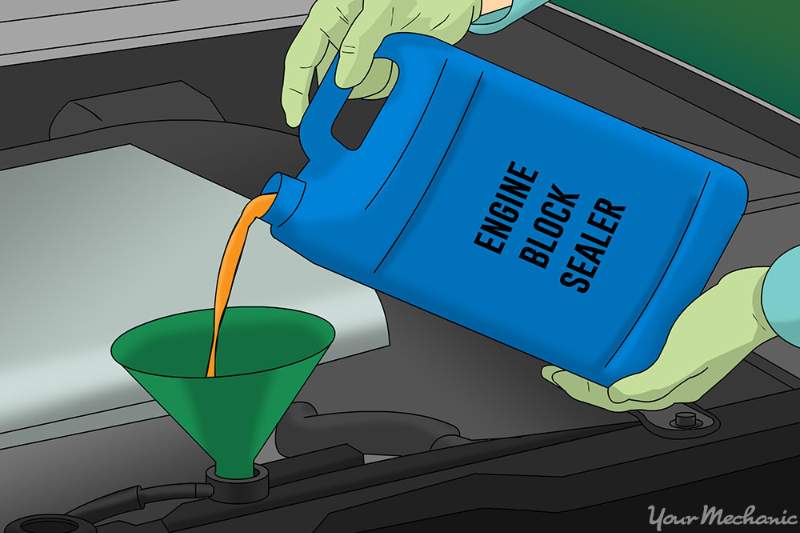
Repairing gasket leaks is a costly process. It may be necessary to spend a few dollars to fix the problem and begin experiencing a smooth driving experience. You can stop the leak in the gasket without having to remove the cylinder head if your engine can run for around 15 minutes without overheating.
Head gasket leak sealers may be used by anybody with little or no experience. In reality, it’s as simple as adding coolant to a radiator or coolant reservoir.
A wide variety of head gasket sealers are available, each promising to provide a complete seal on the head. In some cases, they’re just marketing tricks.
Every automobile engine is unique, and you must follow the product’s directions to get the best results from it. These items are not a long-term solution to gasket leaks, but they can keep your car on the road for many thousand miles with no problems.
Invest In A Repair

Repairing a leaky head gasket may be pretty costly. It’s like handing the technician a blank check. First, the mechanic had to conduct a test to see if the gasket is leaking. The head cylinder must be dropped when the leak has been confirmed.
Multiple difficulties may be discovered once the head cylinder has been removed. This will result in additional effort, additional hours, and more money being spent. Even if you are charged to remove the head cylinder, you may find a crack in the block that necessitates a complete engine replacement.
Invest In A New Engine
An engine replacement may be necessary if the head gasket leak is causing significant damage. It is feasible to get a good used engine for a lower or equivalent cost of head gasket leak repair. In this case, you’ll either have to do it yourself or hire a mechanic to do it for you.
Do It Yourself Replacement
You may be a gearhead or an inexperienced technician, but replacing and grinding cylinder heads is a job best left to the experts. So, unless you have a lot of experience and all the necessary instruments, don’t try this yourself.
If you decide to do all of the repairs yourself, you’ll need a car service manual with step-by-by-step instructions for removing the head gasket. Ensure the machined surfaces are clean even before replacing a new head gasket.
Inspect all other components that may be connected to the problem. When a head gasket has to be replaced, be sure to examine and repair everything that might be causing the leak, such as the cylinder walls and various portions of the cooling system.
Replace Your Car
A scrapyard may be a decent place to dispose of a vehicle with more than 100,000 miles on it and little to no resale value. Although it may be difficult, it may be in your best interest to let go.
Conclusion
You’ve seen the causes, symptoms, and choices for repairing a leaking head gasket. The sooner you fix the leak, the less likely it will grow into a much larger problem.
Don’t take the chance of breaking down in the middle of nowhere or damaging your car’s engine permanently. Decide on the best approach and stop the leak.





After breaking down, no one wanted to repair my 2016 town and country, so I added BlueDevil Head Gasket Sealer and it seems to work because, I no longer have a leak, does not overheat and it runs smooth. Cost $60.00 vs the repair would have cost more than $1,200.00